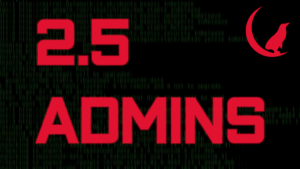
 2.5 Admins
2.5 Admins 2.5 Admins 193: TV DoS
May 2, 2024
Discover how a smart TV can disrupt a Windows PC, AI malware theories, and the importance of encrypting offsite backups. Learn about network issues, the evolving threat of AI-driven malware, and optimizing backup procedures with Restic and ZFS.
Chapters
Transcript
Episode notes
1 2 3 4 5 6
Introduction
00:00 • 2min
Navigating Internet Connectivity and Network Issues
02:17 • 7min
Exploring the Impending Threat of AI Malware
09:05 • 4min
AI, Cybersecurity, and the Threat of Rogue Behavior
12:42 • 8min
Future Cybersecurity Threats, Enterprise Security Ad, and Offsite Backup Strategy Validation
21:04 • 4min
Optimizing Backup Procedures with Restic and ZFS
25:08 • 6min

